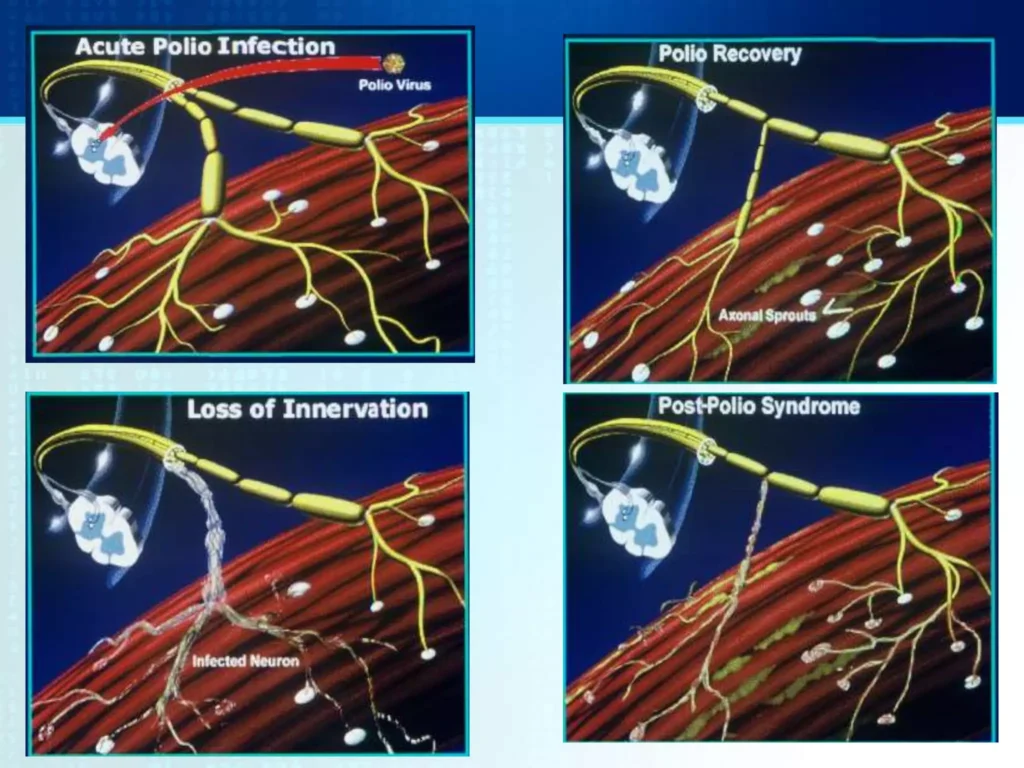Also known as the Late Effects of Polio
What is Polio?
Poliomyelitis, commonly known as Polio, is caused by a virus that enters the nervous system and causes paralysis by damaging nerves called motor neurons (Polio Australia, 2021). Although paralysis is the most noticeable sign of polio, very few cases ever lead to paralysis. The disease is highly infectious, and up until the 1950s, it affected thousands of children yearly until vaccination almost eliminated the disease. However, Polio is still a public health problem in Pakistan, Afghanistan and Nigeria today (Polio Australia, 2021). Polio survivors can develop symptoms years after initial infection. This is commonly known as Post-Polio Syndrome.

What are the Late Effects of Polio?
Post-polio syndrome is also known as the Late Effects of Polio (LEoP). Symptoms vary in severity and range among those affected (Polio Australia, 2020).
Symptoms often come on slowly (commonly 30 years later) and can include:
- Fatigue
- Complex pain
- Weakness/paralysis
- Difficulty sleeping
- Difficulty with breathing or swallowing
- Intolerance of cold temperatures
It is estimated that thousands of Australians are affected or at risk of developing LEoP. It is more common in people over 50 years of age (Polio Australia, 2020). There are older Australians who may have had polio as children but were unaware of it at the time, as they did not experience paralysis. These people may still experience the Late Effects of Polio (Polio Australia, 2021).
How can physiotherapy help people with post-polio syndrome?
A physiotherapy assessment can help to identify management strategies. Management may include education and recommendation of walking aids to help prevent falls. Physiotherapists can also prescribe an individualised exercise program to help prevent increased fatigue and stabilise function by addressing balance, muscle weakness and any walking difficulties. Physiotherapists can also provide advice about lifestyle changes to help manage symptoms.
All our therapists have had additional training to support people experiencing the late effects of polio. You can visit us at our neurological physio clinic in Buderim or in the convenience of your own home. We also offer aquatic physiotherapy services if that is the best option for you.
For more information:
Head to Polio Australia’s website or speak with your doctor.
Polio Australia: Supporting Polio survivors living in Australia with information on living with the Late Effects of Polio, frequently asked questions, community information sessions and access to the quarterly Polio Oz News e-magazine Polio Australia – Representing polio survivors throughout Australia.
Gemma Bounden (Physiotherapist, APAM)
Tyler Steel (Physiotherapist, APAM)
References
Polio Australia. (2021, October 20). About Polio – Polio Australia. Www.polioaustralia.org.au. https://www.polioaustralia.org.au/about-polio/
Polio Australia. (2020, October 26). What are the Late Effects of Polio? – Polio Australia. Www.polioaustralia.org.au. https://www.polioaustralia.org.au/what-are-late-effects/
